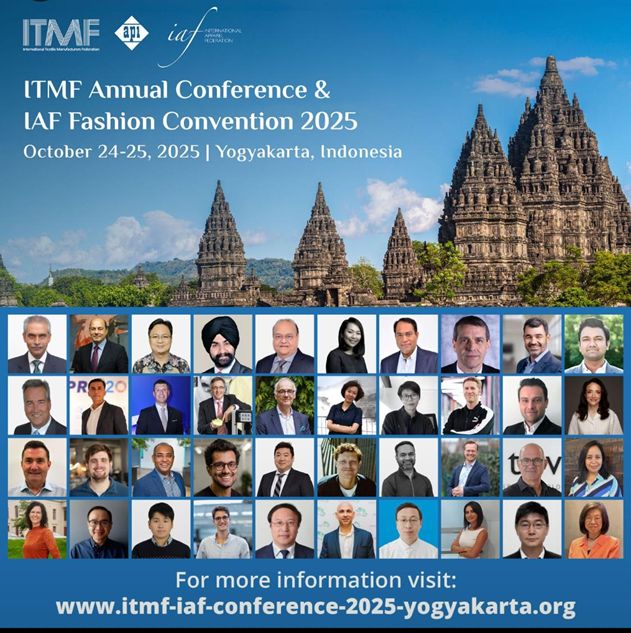FW
A team of scientists and students at Imperial College London have engineered bacteria found in green tea to produce cellulose that can find applications in the filtration and textile industry. The team has developed DNA tools to engineer a specific strain of bacteria found in fermented green tea to produce modified bacterial cellulose. This technique also enables to incorporate proteins and other bio molecules to the bacteria.
Among many different potential applications, protein incorporated bacterial cellulose filter can be used to target contaminants in water supplies. An interesting application is developing sensors using cellulose material that can detect bio toxins, based on color change.
The study shows bacterial cellulose production can be genetically engineered and proteins can be woven into cellulose, which has not been possible before. The next step is to collaborate with NASA scientists to manufacture new materials on Mars using these engineered microbes. Other applications are envisioned in the fashion and textile industry.
Undergraduate students specialising in synthetic biology led this research effort. This study is one of the first to use synthetic biology to engineer ways in which materials are produced. The research work has been published in the recent issue of Proceedings of the National Academy of Sciences, USA.
Santoni, the leading supplier of seamless circular knitting technology will transfer its SWD technology to Nippon Mayer. Nippon Mayer will take over the complete range of products including patents, the relevant manufacturing equipment as well as the entire stock of machines and spare parts.
The after sales service for the installed base of machines will be taken over by Nippon Mayer effective June 1, 2016. Santoni, has been active in seamless warp knitting since 2004. The company developed its own range of compact machines for the application of seamless garments, medical- and lately shoe-fabrics. It holds a number of patents for machine as well as textile technology. Santoni will now concentrate on and further develop its core business circular knitting.
Karl Mayer, the leader in warp knitting, will integrate the SWD technology into its double needle bar competence center at Nippon Mayer and extend the relevant product range.
Karl Mayer’s different business units offer various machine concepts and tailor-made solutions for warp knitting machines, technical textiles as well as warp preparation units for weaving and warp knitting. It has multiaxial and biaxial machines. Roughly 80 per cent of all installed tricot and raschel machines in India derive from Karl Mayer.
Pakistan and Thailand hope to sign a free trade agreement by the end of 2016. This would boost trade and help in strengthening ties between the two countries. The current volume of bilateral trade between Pakistan and Thailand is around $1 billion and there exists good scope to increase it to $2 billion by improving connectivity between their private sectors.
Thailand considers Pakistan a promising country for business relations. Pakistani textiles, readymade garments, leather products and many others are very popular with Thai consumers, who want more of such products. Both countries would work together to provide a leading role to the private sector for improving bilateral trade and economic relations.
Pakistan could facilitate Thailand in establishing trade with south and central Asian countries whereas Thailand could help Pakistan in accessing the Asean region. The close cooperation between Pakistan and Thailand would be a win-win situation for both countries as they could facilitate each other in getting better market access in their respective regions.
Both Pakistan and Thailand have age-old histories of ancient civilisation and have been connected by a common cultural linkage through Buddhism and the Gandhara civilization that flourished in the city of Taxila.
Sri Lanka is looking at developing into a global fashion giant. The apparel industry is focusing on promoting value against volume in a highly competitive global market to boost export revenue. Apparel manufacturers are also seeking to infuse local designs, materials and fabrics into the production of value added functional or fashion apparels for the global market.
There is a large segment of Indians who prefer to purchase Sri Lankan garments due to their high quality and price competiveness. So Sri Lanka needs to manufacture high-end garments particularly targeting the growing Indian upper-class segment. This is in addition to supplying products to conventional markets such as the EU and the US.
Lanka should also look at developing its domestic apparel manufacturing sector, which is growing at a fast pace. While the country’s domestic apparel manufacturing market itself is close to about $2.5 billion, exports account for around $5 billion.
In the post quota era the Sri Lankan garment industry progressively lost market share to cheaper sourcing destinations. The country’s garment manufacturing industry went in for a re-positioning to become internationally more competitive. The country established itself as a sourcing destination of quality garments produced under high ethical and manufacturing standards. In order to attract international buyers, the industry in Sri Lanka has built its reputation over the years on factors other than price. These are quality, on-time delivery and great customer service, ethical and environmentally friendly employment practices, good working conditions and payment of decent wage rates.
Textile units of Ichalkaranji, the textile city of Kolhapur district, have an extended opportunity to submit applications for claiming subsidy under TUFs in their industrial units. The earlier date for submitting applications online was before May 3. Textile operators, however, objected to the announcement being made at such short notice and demanded an extension of the deadline. Many textile unit operators could not upload their claims on time. Thus the deadline has been extended to the end of June.
Under the technology upgradation fund scheme, textile operators will get a five per cent subsidy. Ichalkaranji is the second largest textile hub in Maharashtra, with more than 50 international apparel brands sourcing their products from there. The industry is growing with more units coming up. A power loom was installed here in 1904 and this is possibly the first power loom started in the decentralized textile industry of the country.
Textiles are the backbone of the economy in Ichalkaranji. It is the fastest growing industrial area in western Maharashtra. Earlier, Ichalkaranji was famous for cotton cloths, dhotis and saris. With the changing market situation, it produces not only cotton but also suitings, shirtings, denim cloth, canvas, cambric etc.
In April 2016, China’s cotton imports were up 20.5 per cent month on month, but still down 56.6 per cent from a year ago. In the first four months of 2016, cotton imports were down 54.1 per cent year on year. In the first eight months of the 2015/16 season imports were down 44.9 per cent year on year.
Imports in April increased somewhat from March, indicating a higher demand, but restrained by the coming state cotton auction, the upswing was limited. The US remained the top supplier for China, while India slipped from the second place to fourth place this year. Uzbekistan became the second supplier. Moreover, Australia also went down the rankings. The change of rankings was mainly attributed to the cost performance of cotton.
Except Australian and Cameroon cotton, Chinese imports of cotton from other origins decreased year on year. The quantity of US cotton decreased by 76 per cent on an annual basis. In general, imports of cotton shrunk compared to the last season. The state cotton reserves sales are expected to last from May to August. Besides, the reserved imported cotton is almost totally transacted in May, which affects the transactions of cleared foreign cotton to some extent.
Shaoxing city in eastern China’s Zhejiang province is all set to become the country’s largest textile waste recycling base. Two companies have joined hands for a project aimed at environment protection. These are : Zhejiang Jiaren New Materials and Zhejiang Lvyu Environment Protection. They have announced their support to building the country’s largest textile waste recycling base.
As a result of this project, after two years, China’s textile waste recycling capacity will increase 6,00,000 tons per year or one-third of China’s total textile waste. At present, only about 10 per cent of textile waste is reused in China.
Zhejiang Jiaren New Materials uses eco-circle technology, a chemical method to manufacture recycled polyester fibers. Zhejiang Lvyu Environmental Protection uses technology and process similar to eco-circle to turn textile waste into polyester chips. These chips will be mainly sold to domestic textile mills for producing polyester filaments or staple.
The project costs five billion yuan. The first phase project, with an investment of one billion yuan, broke ground in March this year. Over the next five years, this project will become the largest base for regenerated resources in China.
Textile waste is a material that is deemed unusable for its original purpose by the owner. Textile waste can include fashion and textile industry waste, created during fiber, textile and clothing production, and consumer waste, created during consumer use and disposal.
Textiles giant Bombay Dyeing posted a 43.21 per cent increase in net profit to Rs 111.92 crores during the fourth quarter of the year ended March 31, 2016, as compared to Rs 78.15 crores in the third quarter of the year. Diluted earnings per share reported by the company during this period stood at Rs 5.42 as compared to Rs 3.78 in the third quarter.
Net income from operations reported in the fourth quarter was Rs 665.76 crores as compared to Rs 335.55 crores in the third quarter. Net sales for the quarter under review stood at Rs 656 crores as compared to Rs 745.77 crores, down 12 per cent.
The textile segment posted revenues of Rs 58.58 crores in the quarter as compared to Rs 48.69 crores previously. The polyester segment posted revenues of Rs 274.96 crores compared to Rs 242.64 crores in the prior quarter. However, the textile segment posted a fall in profit during the period to Rs 13 crores as compared to Rs 16.81 crores previously. The polyester segment saw a fall in profit to Rs 1.94 crores as compared to Rs 3.86 crores in the prior quarter.
According to the US Embassy, Ghana’s export of apparel and clothing under the African Growth and Opportunity Act (AGOA) has expanded from less than US$250,000 in 2001 to more than US$9million last year. Said Melinda Tabler-Stone, Charge d’Afffaires at the US Embassy at a sensitisation workshop on ‘Exporting to the US under AGOA: with investment partnerships with US companies and technical assistance from USAID, we fully expect to see another large increase in exports in 2016 with the potential to provide employment opportunities for thousands of people.’
Through USAID, the US government is working closely with industries such as the apparel sector to help realise Ghana’s potential and we are seeing encouraging signs of progress, she added.
The workshop was the first in a series of AGOA outreach events organised by the AGOA Trade Resource Centre at the Ghana Chamber of Commerce and Industry, in collaboration with the American Chamber of Commerce (AMCHAM) and the USAID West Africa Trade and Investment Hub.
In an effort to lift local consumption, spur domestic tourism, China have spawned a duty-free paradise on the southern island of Hainan that it hopes will satisfy a lust for luxury. Firms such as the owner of the world's biggest duty-free shopping centre, China International Travel Service (CITS), are capitalising on a relaxation of duty-free spending restrictions in February, with HNA Group. reporting a 160 per cent surge in sales.
Meanwhile, government initiatives, including 19 more duty-free shops nationwide, come as sales of the types of luxury goods that line duty-free shelves fell 2 per cent last year. Market watchers pin the blame on a campaign against demonstrations of wealth among public officials, as well as a slowdown in economic growth.
As of now, the Chinese buy close to 80 per cent of their luxury goods abroad in cities such as Paris, London and Tokyo, Bain Consultancy estimated.












